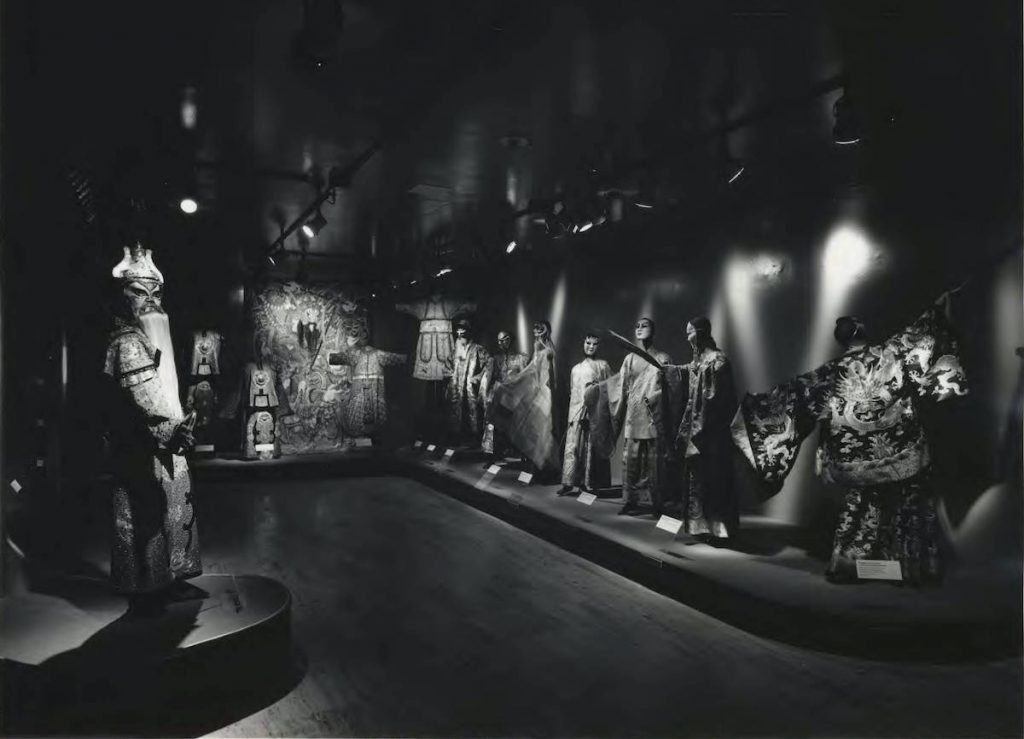The Manchu Dragon
IN THE LAND of jade, everything seems possible and, in many ways, more vivid than life-the sky bluer, the air stronger with contrasts from poetry to violence. China: a vast land of orchids, Mongolian tigers,
gardens, palaces, dazzling smiles, and raucous laughter, forests of camellias, birds of every color, wide seas of ponds filled with lotus petals. From the towns and villages, copper chimes and bronze bells ring out across the extraordinary landscapes. Don’t forget the unique and beguiling panda bears and the other pleasures the Chinese have given us, such as ice cream, fireworks, and pasta.
We show here in our exhibition magnificent embroideries from the Ch’ing dynasty (1644-1912). This is the period when the Manchus ruled China. They swept down from Manchuria in what is now northern China in the seventeenth century and toppled the native Chinese dynasty, the Ming. They were outsiders, but quickly took up the customs and styles of the people they had conquered, never losing their own freshness and energy, which sustained them into this century. These embroideries are of the most remarkable colors. When the Manchus say red, they mean it in seven different tonalities. When they put a green wi I low on perhaps three inches of exquisite silk, there are four shades of green worked into the fabric. There is I ittle variation in the silhouettes, but they all have the mood of luxury and leisure. Leisure is a very big point. The Manchus had strong minds, strong wills-they led the way and followed no one-and were filled with the exquisite refinement of luxury. They surrounded themselves with large inlaid sofas with embroidered pillows, hand-painted curtains of satin or silk gauze, and lovely girls playing on reed flutes. The scholar had a beautiful porcelain pillow to hold his wrist as he worked at his desk covered with a satin tablefront. It was al I endlessly pretty and charming.
The famous dowager empress Tz’u-hsi (1834-1908) was the possessor of a dazzling smile and an extraordinary presence. A very shrewd woman, she did not wish to own anything that anyone else could possibly possess-it must be one of its kind. According to Princess Der Ling, lady-in-waiting to the empress and chronicler of her court, Tz’u-hsi owned the greatest collection of precious stones in existence in her time; There was Queen Victoria’s valuable collection and that of the czarina of Russia, but it is said that Tz’u-hsi’s was more amazing than both these put together. She was obsessed with pearls, and thought diamonds no more valuable than glass. Her jades had the quality of fantasythere was nothing like them anywhere else in the world. She wore three sets of jade bracelets-smooth and flawless. She used jade chopsticks tipped in gold. She ate from jade plates if the food was not too greasyotherwise the plates were of gold or silver.
DIANA VREELAND Special Consultant
Costume Institute
The Metropolitan Museum of Art
